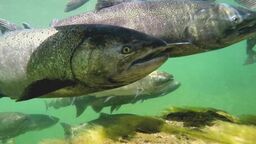A Focus on Recovery Planning and Action
With all the discourse surrounding the Endangered Species Act, some observations from the Sacramento Valley may be instructive to these discussions. From our perspective, various parties in California have been fighting for several decades over the Biological Opinions (BiOps) involving the Bay-Delta and the related river systems. While the seemingly intractable regulatory and legal fights continue, Delta fish are generally declining and water supplies are less reliable for cities, farms and wildlife refuges. In other words, both people and the environment are suffering as a result of this regulatory process. This quagmire suggests that the section 7 (BiOp) process under the Endangered Species Act (ESA), despite many good intentions, may be leading to further declines in the endangered fish it is trying to protect. On the other hand, there are several other collaborative, forward-looking, recovery processes that show promise for both fish and water supplies in California. These processes carry out the “policy of Congress that federal agencies shall cooperate with state and local agencies to resolve water resource issues in concert with conservation of endangered species.”
Sacramento Valley Salmon. In July 2014, the National Marine Fisheries Service (NMFS) issued its federal Recovery Plan for Salmon and Steelhead under section 4 of the ESA. Water suppliers, private landowners and conservation organizations worked together with NMFS to develop this plan. Now, for the past several years, water suppliers throughout the Sacramento Valley have partnered with various conservation organizations, water suppliers in other parts of the state, and fishery and water management agencies on the Sacramento Valley Salmon Recovery Program–an action plan designed to carry out and implement the NMFS Recovery Plan. In the past several years, 13 major projects have been completed as part of this program (in addition to the implementation of several flow management actions), benefitting every life stage of Chinook salmon in the Sacramento Valley. These projects have cost in excess of $17,365,000, with local entities voluntarily contributing approximately $14,360,000 toward this amount, and federal and state funding providing for the balance. There are several dozen more projects that are ready to be implemented as part of a jointly developed priority list and action plan, that is based upon the best available science. These projects all support the Sacramento Valley Salmon Resiliency Strategy. Here, the goal and primary objective of the ESA and the Resiliency Strategy are the recovery of species, thus the collaboration and projects developed by Sacramento Valley water suppliers, conservation organizations and fishery and water management agencies are pointed in the right direction to improve conditions for salmon.

Delta Smelt. The State of California has developed a Delta Smelt Resiliency Strategy with 23 measures designed to help recovery of smelt. Many of these measures were implemented in the past several years and more will be pursued this year. These actions are all designed to improve smelt and their habitat. As an example, and with respect to one measure in the strategy, several water suppliers in the Sacramento Valley have re-routed functional flows through the Yolo Bypass at optimal times to help produce food for the smelt, which seem to be starving according to most scientific accounts. This pilot project looks very promising to fish biologists studying the issue and is a good example of an ongoing action that will be further pursued in the next several months to help recovery of smelt.
As we look forward, new approaches to ESA implementation are necessary if we are serious about fish recovery and assuring water supplies for cities, farms and refuges. We believe that devoting staff energy and financial resources to comprehensive recovery planning and action, along with creating efficient permitting mechanisms to ensure projects are completed, is a better investment of both time and money to ultimately achieve the recovery objectives under the ESA. We welcome additional thoughts on how we can make these programs even more successful.



